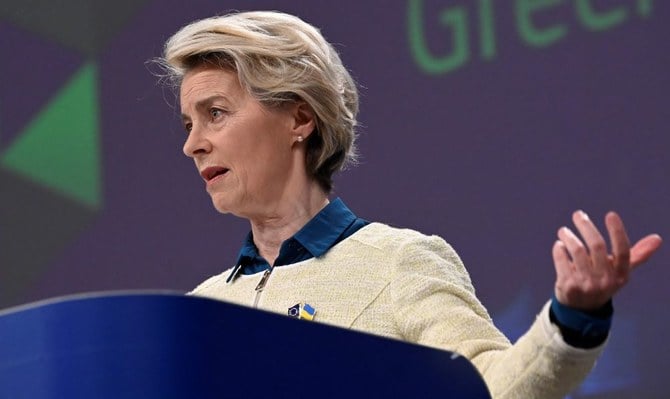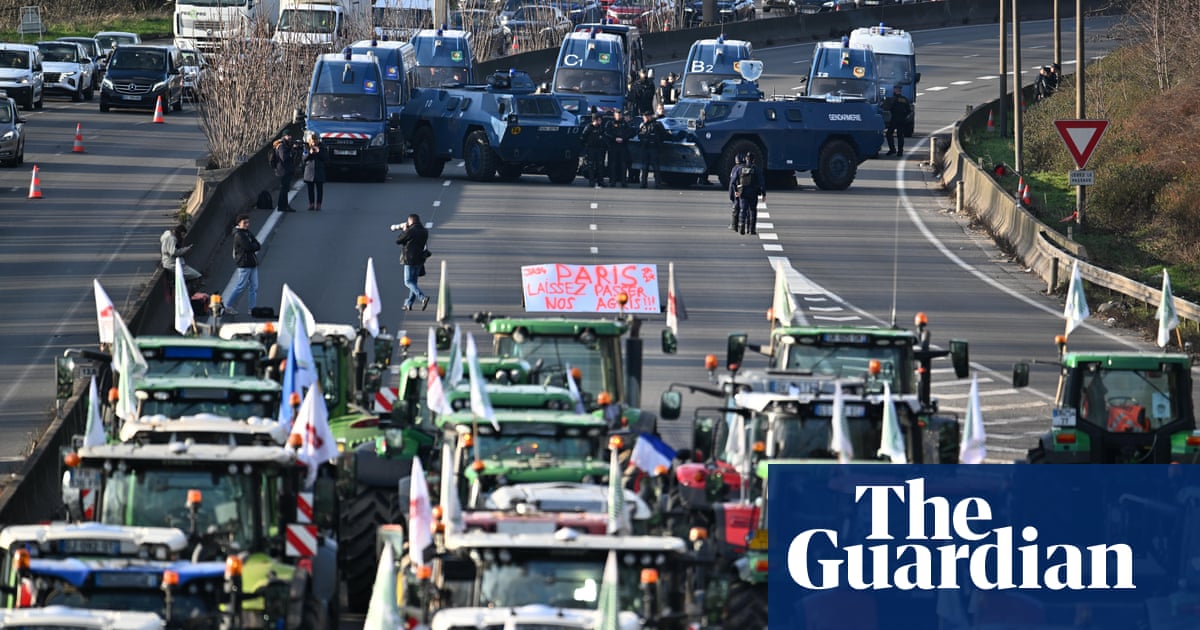
Europe has long seen itself as the preeminent global center for the green industrial revolution, through measures such as the EU Emissions Trading System, the Green Deal and RepowerEU.
However, there is a growing sense in the continent that its edge in this “race” is being imperiled as the assertive industrial strategies of the US and China recognize the massive upfront costs of the energy transition in a bid to dominate the green economy of the future. While the $369 billion US Inflation Reduction Act has been in the EU’s firing line in recent months, European Commission President Ursula von der Leyen spent much more time in her keynote address at the World Economic Forum last month focused on China.
The European Commission accuses Beijing of using “unfair” and “market-distorting” subsidies to gain an advantage in the race to produce clean technologies. Solar is sometimes held up as a warning, given that technology developed in the EU has been used to build a Chinese industry that today accounts for 80 percent to 95 percent of the global supply chain.
Yet, it is the Inflation Reduction Act that has sent shockwaves across Europe, with its massive subsidies for US green industries in areas from renewable power to electric cars. Key EU politicians and firms assert that the legislation discriminates against firms exporting to the US and fear it will lure a critical mass of their businesses, costing jobs and shuttering factories in the green tech sector.
To be sure, the EU is still widely seen to lead the US on rolling out green tech overall. However, the new law means America is now the most attractive investment environment for several key industries.
It is in this concerning context of change for the continent that Von der Leyen announced on Wednesday, in a plan leaked earlier in the week, a series of measures, including loosening state aid rules and a new European sovereignty fund. The initiative is intended to preserve the EU’s competitive advantage on critical and emerging technologies, including biotechnology and clean tech.
As powerful as the new measures might be, however, the EU is hampered vis-a-vis China and the US in this global green race. That is, in part, because the bloc’s industrial policy is fragmented across its 27 countries, with the post-Ukraine energy crisis widening those gaps.
Take the example of differences within the bloc over relaxing state aid, which concerns not just fiscal hawks like the Netherlands, but also the southern and smaller European governments that lack the deep pockets of the EU’s most powerful member states, especially France and Germany. According to recent data from the European Commission, Paris and Berlin together accounted for almost 80 percent of all state aid given to companies since the COVID-19 pandemic.
Since last March, Germany has had more than €356 billion ($387 billion) in economic support greenlighted by the European Commission — more than half of the overall total — while France got about a quarter, at €160 billion. Italy was third, securing approval for just 7 percent of the total, and Denmark stood in fourth place. The rest of the bloc collectively accounted for less than 12 percent of the remaining state aid approved by Brussels, about €78 billion.
The new initiative is intended to preserve the EU’s competitive advantage on critical and emerging technologies.
Andrew Hammond
While France is therefore, unsurprisingly, at the vanguard of wanting a stronger “Made in Europe” green industrial policy, Italy’s government is not alone in calling for this to happen via a joint EU fund to help green tech across the bloc, and that looser state aid rules should not be a free-for-all. Meanwhile, fiscally conservative nations like the Netherlands want Brussels to first divert unspent billions to the green transition from its COVID-19 recovery plans — an €800 billion mega-measure — before commissioning further funds.
While intra-bloc differences on these issues are real, they may soon shrink given the growing warnings that the European continent’s industrial base could end up structurally uncompetitive, especially if high energy costs persist. Energy-intensive industries, such as aluminum, fertilizers and chemicals are at particular risk of permanently shifting production to where cheap energy abounds (for instance, natural gas in the US costs about a fifth of what firms pay in Europe).
As well as addressing factors such as high energy costs, other issues will also need to be looked at by Brussels. One of these may be the high reliance that the EU has traditionally had on carbon pricing as its key tool for stamping out emissions, with a reluctance to instead wield capital as a key driver of the green transition in a more active industrial policy.
While the final form of Europe’s counterattack is therefore not yet set in stone, the political imperative to act is growing. Differences will remain across the bloc, but there is collective determination to try to restore a level-playing field with the US and China to preserve Europe’s economic attractiveness in the global green race.
Andrew Hammond is an Associate at LSE IDEAS at the London School of Economics.












